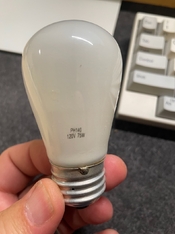Jack Baty
Member
I thought I'd gotten the correct replacement bulb for my IIc but exposure times are very short. Making an 8x10 print of an average-density 120 negative at f11 demands exposure time of 5-10 seconds, which sure feels short.
The bulb I bought, per someone's recommendation, was the PH140 75W (photo attached). Is there a more appropriate replacement bulb? Hopefully, one that allows for longer exposure times.
Thank you.
Jack
The bulb I bought, per someone's recommendation, was the PH140 75W (photo attached). Is there a more appropriate replacement bulb? Hopefully, one that allows for longer exposure times.
Thank you.
Jack












